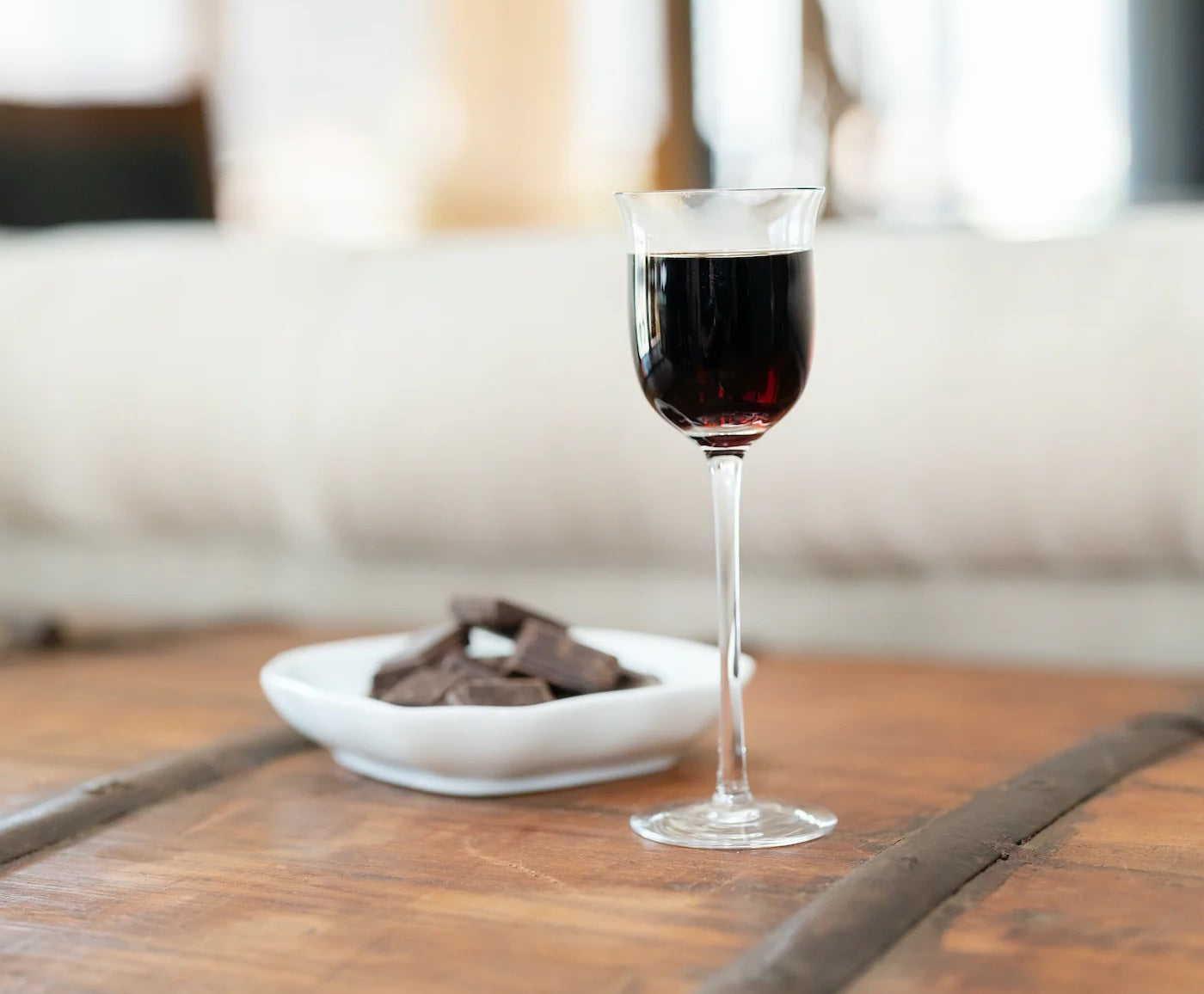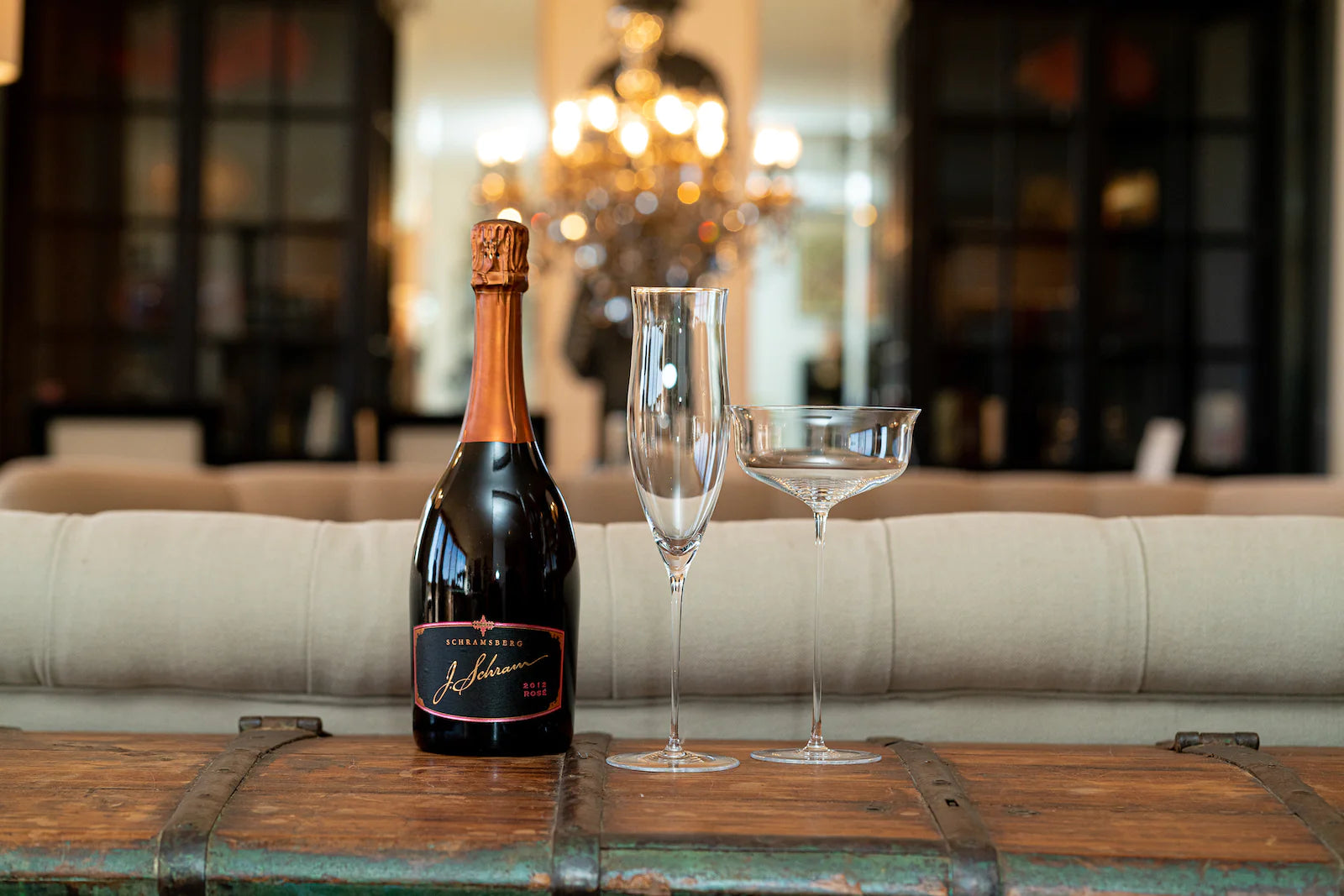Champagne
What Is a Flute Glass? The Elegant Secret to Enjoying Sparkling Wines

Have you ever held up a sparkling flute glass for a celebratory toast and stopped to admire the elegance of the stemware in front of you? Most of us have. The flute glass with its artfully sleek and sophisticated shape demands to be appreciated.
But have you also wondered how this elegant glass came to be?
What is a flute glass? And how did history shape this iconic glassware that has become our favorite way to celebrate with a glass of champagne or sparkling wine?
What Is a Flute Glass? The Evolution of a Classic Stemware
The flute glass has a rich history that can be traced back to the 17th century. Its design and evolution are intertwined with the invention of sparkling wine and the refinement of glassmaking.
Sparkling wine is often said to have been invented in 1693 by the French monk Dom Pérignon (although some say it was invented closer to 1662 by an Englishman). During the 18th and 19th centuries, sparkling wine became popular with French aristocracy and royal courts, which in turn created an interest in creating beautiful glassware to accompany the bubbly beverage.
Early versions of champagne glasses looked more like coupe glasses, wider and more bowl-shaped. It may be a myth, but some say the shape of the coupe glass was inspired by the figure of Helen of Troy, Madame de Pompadour, or possibly Marie Antoinette, although we will never know for sure.
It wasn’t until the 1950s when the design of the flute glass as we recognize it today started to take shape. The shift towards a more elongated and slender shape was influenced by the desire to preserve the effervescence of sparkling wines and the advancements in glassmaking technology that allowed for more consistent and refined glassware production.
By the beginning of the 2000s, the flute glass had cemented its elegant silhouette as an icon associated with sophistication, luxury, and celebratory occasions.
Related: 5 Best Glasses for Champagne for Every Occasion
The Design and Aesthetics of Flute Glasses
What is a flute glass? To answer the question, you have to look at both its form and function. A flute glass has a beautiful, elegant design, but it is not crafted in that style for aesthetics alone. The form of the flute glass is intentionally shaped to bring out the best in the drink it holds.
A flute is typically made of clear glass or crystal. It features a long, thin stem that leads up to a slender, elongated bowl with a thin, tapered rim. The flute glass’s sleek design is meant to accentuate the beauty and craftsmanship of the beverage it holds. It is designed to highlight the specific sensory aspects, aromas, and tastes of champagne and sparkling wines.
- Effervescence (Bubbles): The elongated and narrow bowl of the flute helps preserve the effervescence in sparkling wine, allowing for a continuous stream of bubbles that rise from the bottom of the glass.
- Clarity: Made of high-quality glass or crystal, flute glasses offer a clear view of the magic happening inside of the glass. You can see every bubble rising and sparkling.
- Aroma: The slender design of a flute glass concentrates the aromas of sparkling wine and sends them up toward the drinker's nose, allowing for a more pronounced and focused olfactory experience.
- Temperature Maintenance: The narrow rim of the flute glass minimizes the wine's exposure to air which helps to maintain temperature, keep the wine cooler for a longer time, and enhance both the taste and mouthfeel.
- Handling: The narrow design of the flute makes it easy to hold and handle, allowing for a comfortable and controlled grip. This is particularly important during toasts and celebratory moments when individuals may be raising their glasses for extended periods.
Comparing Flute Glasses with Other Stemware
Flute glasses are considered to be champagne glasses, but not all champagne glasses are flute glasses. A champagne glass is considered to be any stemware used to drink champagne. Two other glasses typically considered champagne glasses are coupe and tulip glasses.
Like flute glasses, coupe, and tulip glasses also make beautiful vessels for bubbly toasts, but they each offer their own set of pros and cons.
Coupe Glass: A coupe glass has a long, sleek stem with a shallow, wide bowl and broad rim. Coupe glasses have a classic, vintage look and were popular in the early to mid-20th century.
- Allows for an appreciation of aromas due to the larger surface area
- Also suitable for cocktails and mixed drinks
- Fits an aesthetic appeal that is classic and retro-themed
- May be perceived as more comfortable for sipping
Tulip Glass: A tulip glass is similar in shape to a flute glass in that it has a long, narrow bowl. Unlike the flute, it has a shorter stem and more shapely bowl that widens out and narrows at the top, resembling a tulip flower.
- Enhances the aromas of the drink, similar to wine glasses
- Also suitable for a variety of beer styles and wine types
- Offers a comfortable grip with a shorter stem
- Versatile for both still and sparkling beverages
Flute Glass
- Preserves effervescence well, maintaining a lively appearance
- Directs aromas toward the nose
- Elegant and visually appealing for toasts and celebrations
- Maintains the temperature of sparkling wines
Related: Champagne Flute vs Coupe: Choosing the Perfect Glass for Your Sparkling Wine
How to Choose the Perfect Flute Glass
When shopping for flute glasses, you will have a variety of options. From plastic disposable party favors to fine crystal stemware, flute glasses have been made to suit every want and need. The key to finding the perfect flute glass is understanding what your options are and knowing what will match your personal style or special occasion.
Intended Use: Before you start shopping for the perfect flute glass, consider when and how you want to use your new stemware. Is it for a special occasion, frequent use, or a memorable gift? For a special moment, look for higher-quality materials and aesthetic details in your glassware. For glasses that will be used more often, shop for more durable glasses that can withstand frequent handling and washing.
Material: We recommend only choosing crystal or glass when making a flute selection. Both will provide the elevated look and taste that a glass of bubbly deserves. Crystal glasses are known for their superior clarity, thinness, and ability to enhance the wine-drinking experience. They are more delicate and may be more suitable for special occasions. Glass options are more durable and practical for everyday use.
Craftsmanship: Quality craftsmanship contributes heavily to the aesthetic appeal of flute glasses. As you shop, look for craftsman details and embellishments that match your unique style, event, or occasion theme. Glasses made with the highest-quality materials and craftsmanship will result in greater clarity and a flawless appearance that can add a touch of elegance to the overall presentation.
Brand: Consider purchasing flute glasses from reputable brands known for their quality glassware. Reputable brands often prioritize craftsmanship, use high-quality materials, and have a history of producing glassware that enhances the drinking experience. Some of our favorite flute champagne glasses include:
- Swallow Champagne Flutes from the Fran Berger Glassware Collection
- Lismore Essence Champagne Flutes from Waterford
- Dom Pérignon Champagne Flute from Baccarat
The Art of Serving Sparkling Wine in a Flute Glass
Once you select the perfect flute glass, then comes the time to pour in some bubbly. Serving champagne is an art that can elevate an ordinary night into something magical. To serve champagne or sparkling wine to best accentuate its look and taste, follow these tips on pouring, handling, and food pairing.
- Before you plan to serve sparkling wine or champagne, chill the bottle. Sparkling wine is best served between 40 and 45 degrees Fahrenheit (4 and 7 degrees Celsius).
- Ensure that your flute glasses are properly chilled. Place glasses in the refrigerator or an ice bucket for a short time to achieve the desired temperature.
- Hold the stem when handling glasses. Holding a champagne glass by the stem prevents the transfer of body heat to the wine, helping to maintain its optimal temperature.
- Pour the sparkling wine gently into the flute glass. Hold the bottle at a slight angle to minimize the formation of excessive bubbles. Pouring gently helps maintain the wine's effervescence and reduces the risk of spillage.
- Aim to fill the flute glass to about two-thirds or three-quarters full. The space at the top allows room for the wine's aromas to concentrate, enhancing the overall sensory experience.
- Pair champagne and sparkling wine with appetizers such as oysters, caviar, and smoked salmon; cheese such as brie, parmesan, and goat cheese; and fruit-based desserts and light pastries.
- Raise your glass and give a toast to celebrate the beautiful moment in front of you!
Related: 4 Different Types of Champagne
Caring for Your Flute Glasses
What is a flute glass? It’s something to be treasured. Give your flute glasses the care and attention they deserve once they are done helping you celebrate a special moment. Flute glasses are delicate and should be handled differently than the rest of your everyday glassware.
- Hand-wash: Avoid placing flute glasses into the dishwasher to prevent breaking delicate stems. Instead, hand-wash with a mild, fragrance-free dish detergent and warm water. Use a soft sponge or cloth to scrub the interior and exterior of the glass. Avoid harsh chemicals or scouring pads that can scratch the glass or leave a residue. Pay special attention to the bowl and rim to remove any lingering residues.
- Rinse Well: Rinse the flute glasses thoroughly with warm water to remove any soap residue. Ensure that no soap or detergent odor remains.
- Dry Fully: To prevent water spots and allow for proper drying, invert the flute glasses and place them on a clean, dry towel or a specialized glass drying rack. Avoid using cloth that may leave lint.
- Store Upside Down: To prevent dust from settling inside, store flute glasses upside down. It’s recommended to use hanging racks designed for stemware as they provide a secure and organized way to store flute glasses without risking damage.
- Protect: Store flute glasses in a cool, dry place away from direct sunlight and heat sources as sudden changes in temperature can cause the glass to crack.
Savor a Moment with the Perfect Flute Glass
What makes a flute glass so special? Now you know! Raise your glass knowing you are drinking from an exquisitely crafted vessel with a rich history designed to bring out the best in sparkling wines and your most important moments.
See how the Swallow Champagne Flute from the Fran Berger Collection can offer you the perfect way to sip on something special as you savor your most significant moments.
























